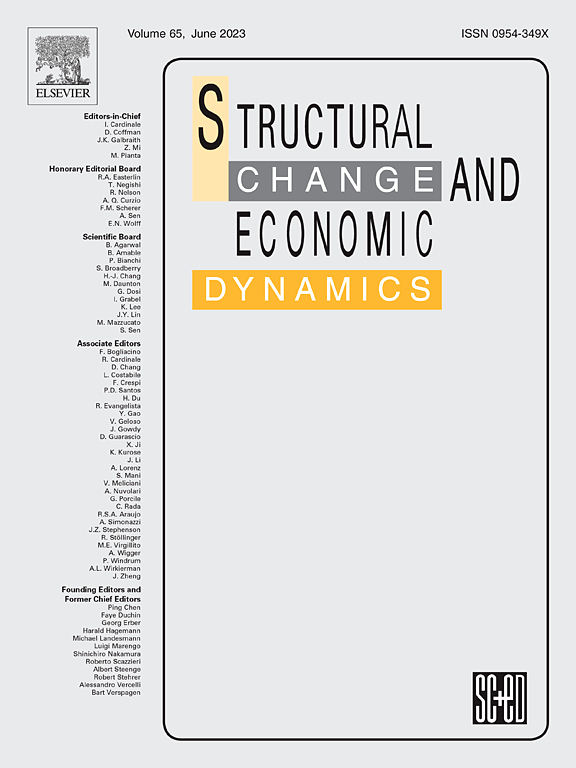数字化、电子政务和非正规部门
IF 5.5
2区 经济学
Q1 ECONOMICS
引用次数: 0
摘要
本文表明,数字化并不一定会减少非正式行为的规模,这取决于法治和有效的司法系统。我们建立了一个具有异质劳动力市场的简单模型,其中正规部门公司满足数字化和非正式交易电子治理所需的税收,避免了税收负担。数字化增加了陷入非正式交易的机会,直接鼓励了正式活动。然而,它要求更高的税收,这适得其反。这两种力量的相对强度决定了非正式性的大小,表明一种非线性关系。执行最低工资或生产率要求可能会扩大非正规行为的规模。从1990年到2017年,对约152个国家的跨国面板数据进行的计量经济学结果显示,非正式性与数字化之间呈u型关系。然而,随着司法制度和法治的完善,这种负面影响会变得更大。本文章由计算机程序翻译,如有差异,请以英文原文为准。
Digitalisation, e-Governance and the informal sector
This paper shows that digitalisation does not necessarily reduce the size of informality and would depend on the rule of law and effective judicial systems. We build a simple model with heterogeneous labour markets where the formal sector firms meet the tax required for digitalisation and e-Governance for the informal transactions, avoiding the tax burden. Digitalisation that increases the chances of being caught in informal transactions directly encourages formal activities. However, it demands higher taxation, which works in the opposite direction. The relative strength of these two forces determines the size of informality, suggesting a non-linear relationship. The enforcement of minimum wage or productivity requirements may raise the size of informality. The econometric results from cross-country panel data for around 152 countries from 1990 to 2017 revealed a U-shaped relationship between informality and digitalisation. However, the negative impact gets stronger under the improved judiciary system and rule of law.
求助全文
通过发布文献求助,成功后即可免费获取论文全文。
去求助
来源期刊

Structural Change and Economic Dynamics
ECONOMICS-
CiteScore
9.60
自引率
4.90%
发文量
159
期刊介绍:
Structural Change and Economic Dynamics publishes articles about theoretical, applied and methodological aspects of structural change in economic systems. The journal publishes work analysing dynamics and structural breaks in economic, technological, behavioural and institutional patterns.
 求助内容:
求助内容: 应助结果提醒方式:
应助结果提醒方式:


